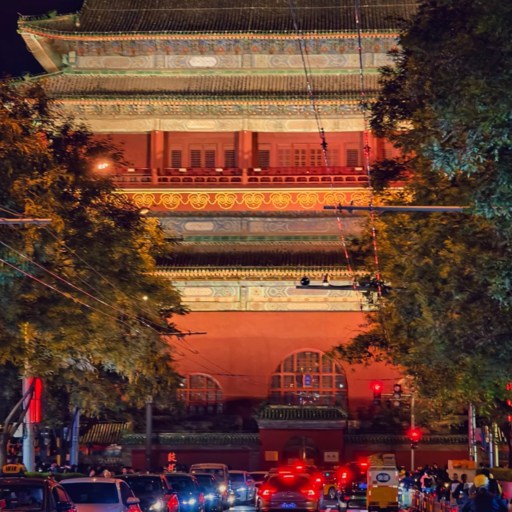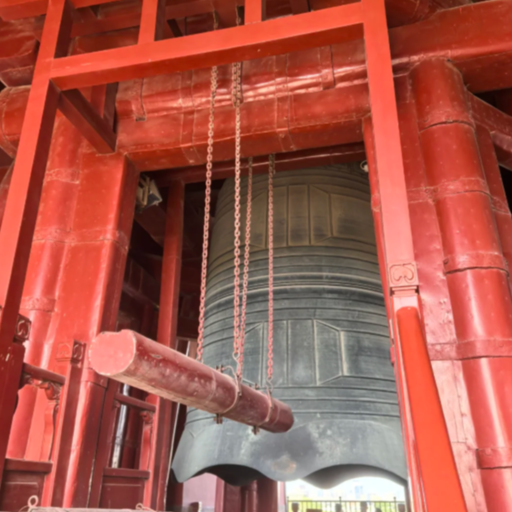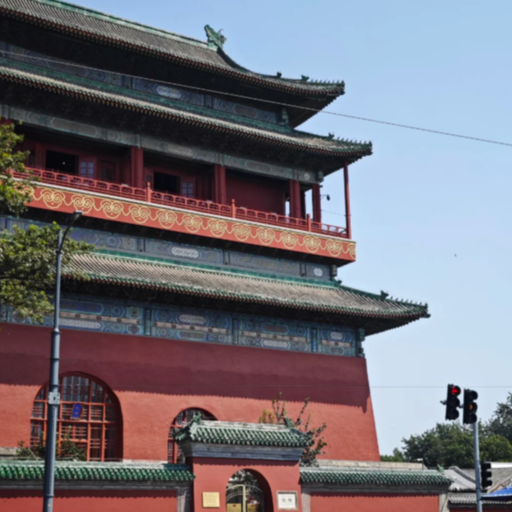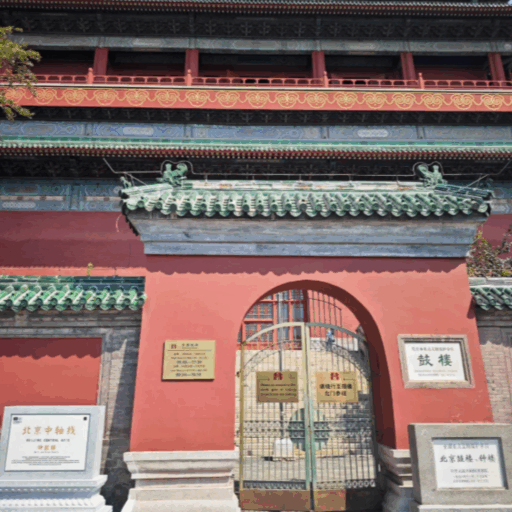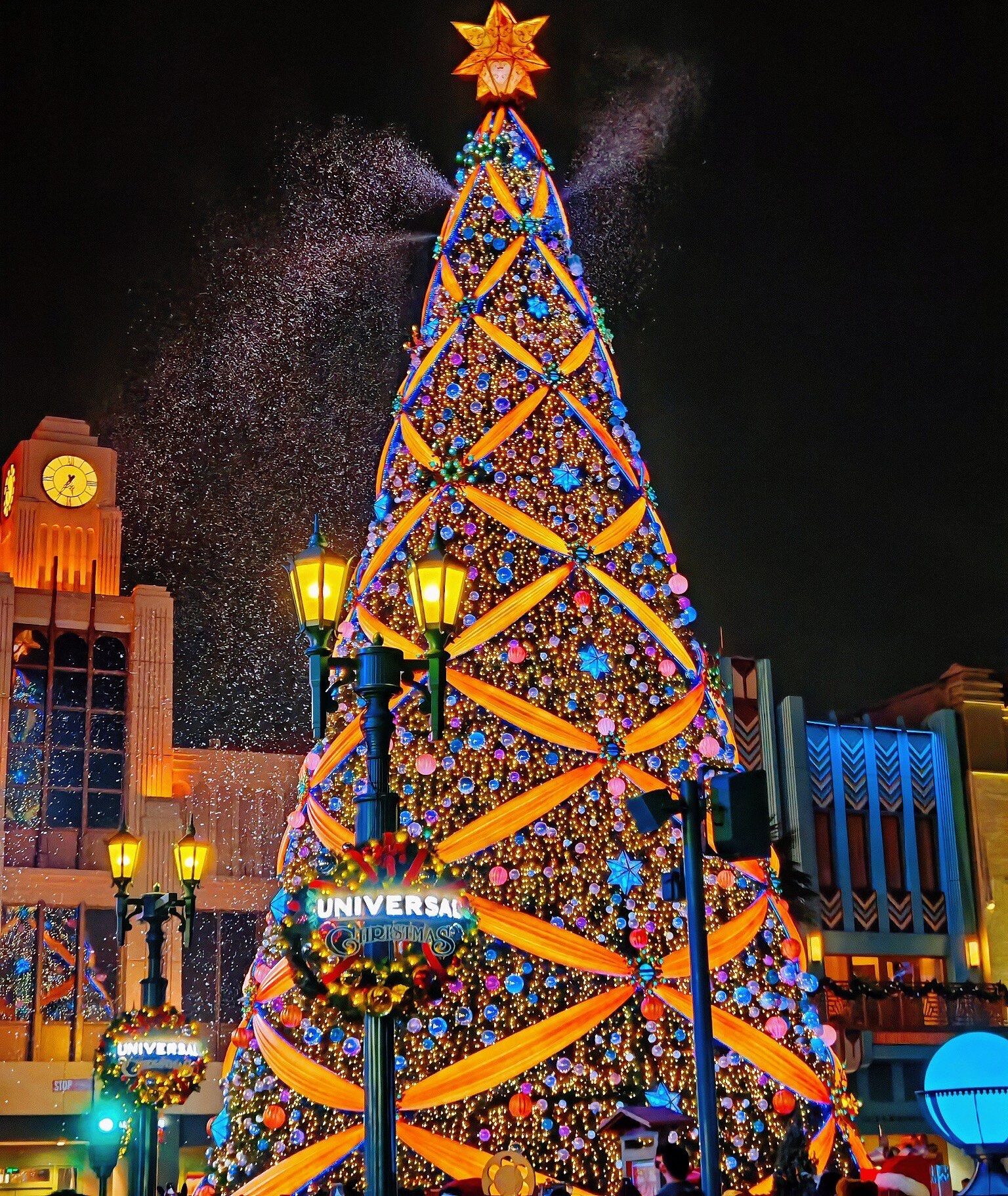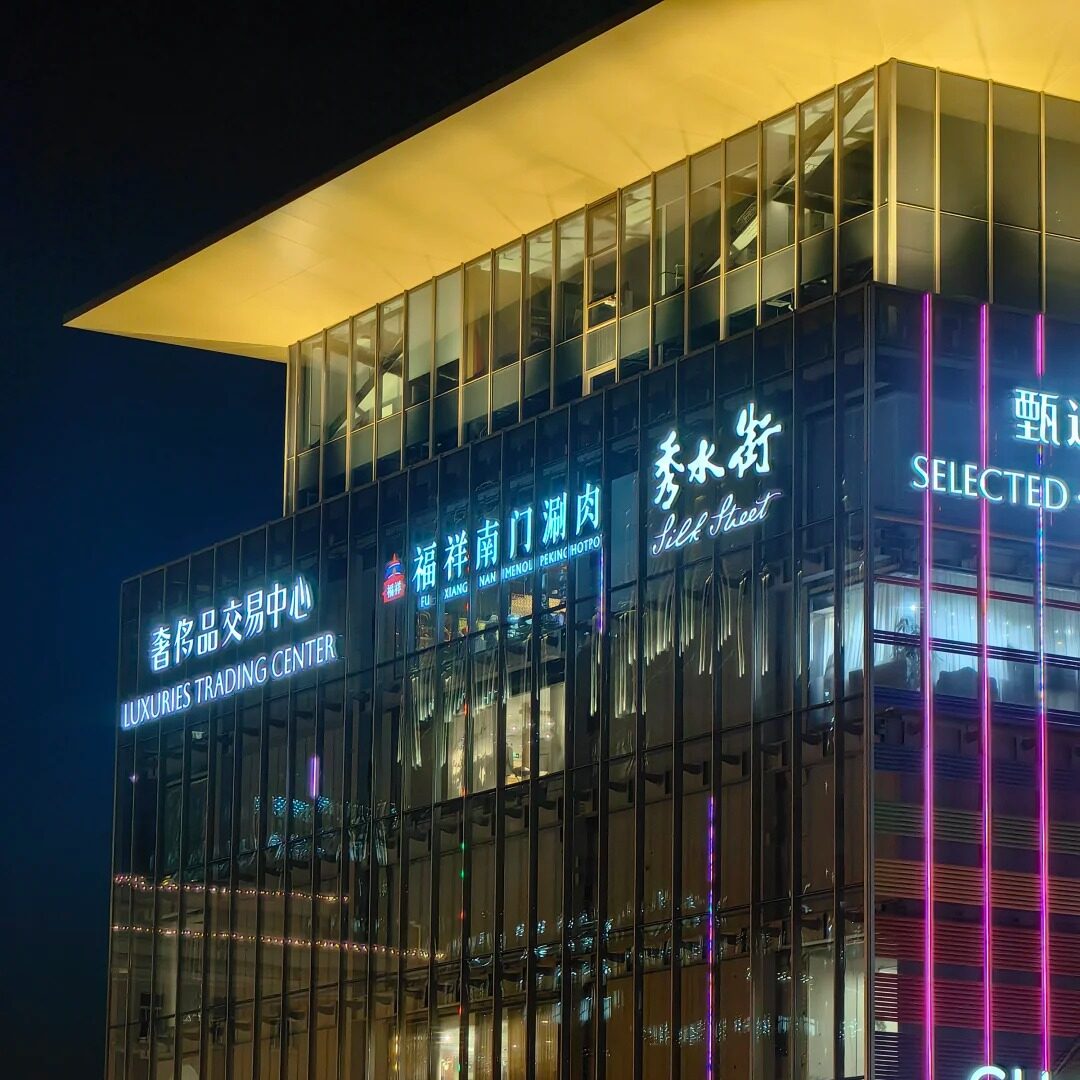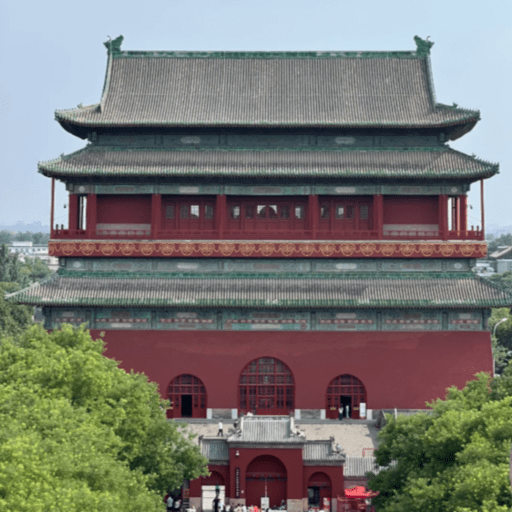
Bell and Drum Towers
To this day, parts of Beijing go not by the clock but by echoes. A deep drumbeat reverberates through the square between the Bell and Drum Towers, an old bronze bell hums gently and somewhere a street vendor hollers over the clatter of a flaming pan. Residents walk on by without looking up; tourists pause halfway down, torn between whether they’ve stumbled into a performance or heard the city breathe.
What’s most impressive about them here isn’t the height or the age of those towers but the rhythm that continues to hold them. In this open square, it’s easy to imagine how these towers used to tell Beijing whether to rise or rest — and, in a way, they still do.
Quick Facts on Bell and Drum Tower Beijing
If you’re planning a short stop around bell and drum towers Beijing, here’s what you need to know without scrolling through endless pages.
📍 Location: Gulou & Zhonglou, Dongcheng District, Beijing
⏰ Opening Hours: 9:00 AM – 7:30 PM (summer); 9:00 AM – 5:00 PM (winter)
🎫 Tickets: Around ¥30 for a combo ticket covering both towers
🌅 Best Time to Visit: Late afternoon, when the light turns gold and the drums start to echo
🚇 Transport: Take Metro Line 8, get off at Shichahai Station, Exit C
⏳ Suggested Duration: 1 – 1.5 hours for both towers
Keep your ticket handy — attendants often recheck it when crossing from one tower to the other.
A Timeless Duo: The Story Behind Beijing’s Bell and Drum Towers
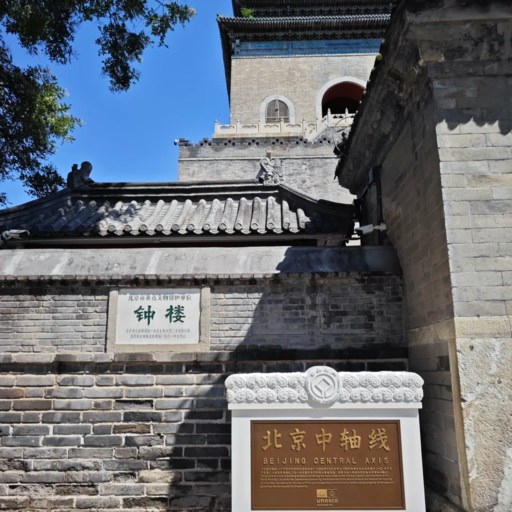
Close-up View of the Bell Tower
Prior to the breaking of the skyline of Beijing with skyscrapers, time was even counted in sound. The bell and drum towers, one sunrise tower, the other the dusk tower, once controlled the rhythm of the city. Their grey roofs are reflective of silent sentinels that overlook the north of the Forbidden City at a distance. But each possessed its own voice, one low and full, the other quick and violent. They marked together not only hours, but the sequence of imperial life.
Locals still call them the Clock Tower Venus of Beijing, known in Chinese as the Bell and Drum Towers. Tourists climb for sweeping views of rooftops and hutongs, but Beijingers seek something deeper — to feel echoes from another era. In those times, mornings began not with alarms but with bronze strikes and deep drum vibrations, sounds that once marked the city’s heartbeat.
Ancient Timekeepers of the Capital
But what were drum towers? Beijing had been using these towers long before there was a wristwatch or a smartphone alarm to synchronize its clock. The beats of the Drum Tower used to mark the start and end of each day and all the activities of the city including market opening and closing the city gates. Constructed in the Yuan Dynasty, and reconstructed in the Ming and Qing, they were the loudest and most accurate in the empire.
What about the use of a bell tower, it was not necessarily ornamental. The Bell Tower, first on the North, bore more low and prolonged strains, which swept over the flat north plain. The striking of the great bronze bell thirteen times at the break of day could be heard several miles distant. These paired rhythms were not only practical, but they represented the Confucian concept of harmony between heaven (bell) and earth (drum).
Legends, Fires, and Restorations
The towers had not always been kindly treated by history. The towers caught fire several times, the most tragic during the Qing period when lightning struck the Drum Tower roof. In the 20th century, rumors of a Drum Tower collapse in Beijing went viral, but no collapse occurred; only a temporary shutdown happened during large-scale renovations in 2008.
This renovation brought centuries of dust and antique paint to the surface, revealing ancient Yuan foundations buried under generations of rule. Despite many historical buildings disappearing during the Cultural Revolution, residents lobbied to preserve the towers, perhaps sensing the pulse of their former capital. Today, the same rhythms echo every afternoon as young drummers perform old beats under reconstructed beams.
Timekeeping may have become computerized, yet the Bell and Drum Towers maintain their role in Beijing’s heartbeat—not as reminders of the past, but showing that time once had a human voice.
The Bell Tower: Echoes That Marked the Morning
- The Street beside the Drum Tower
- Inside of Bell Tower
If the Drum Tower was Beijing’s heartbeat, it is said that the bell tower Beijing was her breath — slow, deep and meant to travel a great distance. The other, taller one rises from gun-metal grey bricks with its calm and resolute composure. The building itself seems heavier, almost solemn, its walls built to contain silence until the next chime. Inside is a huge bronze bell, so enormous that it formerly took an entire team of men to hit it with wooden beams. These days it has all died down, but still that presence of the bell rests in the air, a kind of echo from a long note which keeps on vibrating.
Architectural Details & Symbolism
The Beijing Bell Tower rises on heavy brick walls, with a steep stone staircase circling high above, where air cools and dampens even in summer. In the main chamber, slender windows filter light across the curved bronze of the “Yongle Bell.” Crafted in the Ming dynasty, it weighs nearly 63 tons and carries over 230,000 engraved Chinese characters — Buddhist sutras and cosmic symbols meant to sanctify sound.
When it rang, residents felt vibrations not only in their chest but also in the soles of their feet. Its low pitch was believed to attune the city’s spirit with the heavens, a daily purification act. Symbolically, it represented yang — the bright, up-reaching force balancing the Drum Tower’s yin. Even today, guides emphasize how the two towers face each other on a north-south axis, echoing the city’s cosmic order.
Morning Ritual and the Lost Sound
During imperial times, the bell’s thirteen chimes at dawn heralded the start of the city day. Gates unhinged, market stalls pulled up their blinds and even those colonial officials whose appointments were a matter of imperial indifference set their clocks by the sound of it. That ritual — called 晨钟暮鼓 (morning bell, evening drum) — once marked the rhythm of life in Beijing.
The bell no longer rings today, it is reserved for special ceremonies and holidays due to local laws. But should you stand directly under the beams shortly after sunrise, it is possible to conjure a sense of that slow-body vibration back. It’s a reminder that the bell and drum towers were never ordinary buildings, but rather instruments through which the city breathed.
The Drum Tower: When the City Woke to the Sound of Thunder
- Drum Tower Beijing
- Gate of Drum Tower
Standing just north of the Bell Tower, the Drum Tower Beijing governed over the pulse of a city. Its booming notes sounded the passage of time, but also moments of power and ceremony in imperial China. It's no longer the official timekeeper, but today it is one of the most intriguing cultural stops in the capital. People are attracted by its rhythmic power, by the energy of live drumming and how sound travels through ancient wood halls. With its twin, the Bell Tower, it fulfills the archetypal balance of bell and drum towers that once regulated Beijing’s daily rhythm.
The Giant Drums and Their Music
When visitors enter the Drum Tower Beijing, they see 25 giant red drums lined up in an impressive row. Each drum’s hide stretches taut, catching soft light from windows overlooking the old hutongs. As drummers strike, a deep, pulsing rhythm fills the air, felt in the chest more than heard. One Tripadvisor visitor wrote, “The rhythm shook my chest — it felt like the city’s ancient pulse coming alive again.”
The central, largest drum represents authority and was used to give time to the entire capital. In the past, such is drums answered to "What were drum towers used for? — to govern daily life, alert emergencies and denote ceremonies. While the original Ming drums were smashed in subsequent wars, today’s re-creations are faithfull to their grandeur and soundscapethe musical glory once ruled over imperial Beijing.
The Modern Performance: A Five-Minute Thunder
The drum tower performance, a five-minute spectacle that turns the silent hall into a living echo chamber, starts every hour on the hour. The drummers station themselves in their traditional robes before the gigantic instruments. Their ancient rhythms once kept time for emperors, and their timing is perfect. The vibrations rumble through the timbers, shaking the floorboards beneath visitors’ feet.
For the full experience, travelers gather on the front balcony, enjoying a panoramic view of the old city and rolling drum thunder. Watching the drummers at sunset creates unforgettable images that linger long after the performance ends. For some visitors, it offers more than a show; it provides a glimpse into Drum Tower China, where tradition, sound, and history converge. When the final echoes fade, you can imagine the ancient city stirring again—from morning beats to evening bells calling residents to night.
Climbing Up for the View: What to Expect from the Top
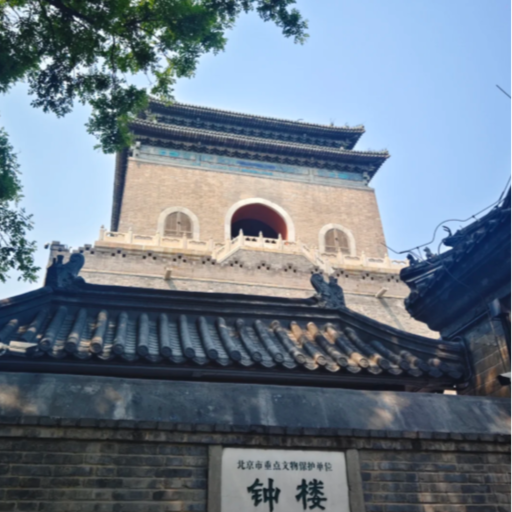
Outside of Bell Tower
The Cityscape from Above
From the top, it’s easy to see patterns in the old city that are invisible from street level. The hutongs' rooftops form a crisscrossing mosaic, interrupted by the occasional pagoda rooftop or modern tower lifting its head above. The water of Shichahai shimmers under the late afternoon sun, and when you lean over the railing, the hutong rooftops seem close enough to touch. You can almost see into the narrow lanes below, where time feels paused. If you want to explore more of Beijing’s historic landmarks and hidden spots, check out this detailed guide here. The view reveals why these towers stand here — not just to signal time, but to oversee the city during the red haze of past wars. Watching locals cross the square, playing chess or selling snacks, adds a human touch to the scene, making it feel alive and unposed.
Photography Tips & Best Time to Visit
For photos, nothing beats the golden hour before sunset. The sun heats up everything red and gray on the towers, the hutongs bask in long shadows. TripAdvisor photographs confirm this — the most liked shots all have a soft afternoon light and the lake in background. You’ll find fewer crowds on weekdays, and early mornings work well too, though the towers open a bit later. Corners of the balcony curve around perfectly, capturing both the square below and the skyline beyond. A mini tripod or steady hand helps, as the wind often shakes phones and cameras. Plan to spend 20–30 minutes at the top to enjoy several light cycles and capture candid shots of locals in their town square.
Practical Travel Guide & Cultural Tips
Getting There & Tickets
The towers are easy to reach and clearly marked on most metro maps. Take Metro Line 8 and get off at Shichahai Station, then exit from Exit C. The Drum Tower stands just a short walk north, with the Bell Tower directly across the square. You can buy tickets for the Drum Tower Beijing at the entrance, and they are usually available on-site. However, it’s smarter to book in advance through Trip.com or Klook to save time. A combo ticket for both Bell and Drum Towers costs around ¥30, while single tickets are slightly cheaper but less convenient. Avoid the middlemen offering “guided tickets” at inflated prices — all displays include English descriptions, so you won’t need a guide unless you want extra background details.
Timing & Seasonal Advice
Then what time does the bell and drum towers open in Beijing? Both towers open from 9:00 AM to 7:30 PM in summer, and until 5:00 PM in winter — the official Drum Tower Beijing hours. Each season adds charm: spring brings blue skies and blooming courtyards, while summer fills the square with sweet snacks and lively chatter. In winter, the crisp air makes the drums sound sharper and more powerful. The best time to visit is about an hour before sunset, when crowds thin and the city glows in golden light. Perfs generally start mid-day but early mornings can be peaceful as well.
Local Tips: Tea Houses & Hutongs Around
After your climb, meander into the nearby hutongs (alleyways) for a more leisurely taste of Beijing life. Vintage teahouses scatter around the lanes near Yandai Xiejie and Shichahai — great places to stop for a cup of jasmine tea, while listening to sounds of old Beijing folk tunes. If you like to shop, search for something low-impact: hand-made paper fans or bronze miniatures of the towers as souvenirs. For more fun things to do and hidden gems around Beijing, discover this helpful guide here. To drift through these alleys is to find the grand towers joined to local culture’s living pulse — a great way to finish your visit where history and life highs still mix effortlessly.
FAQ about Bell and Drum Towers
Q: What time does the Bell and Drum Towers open in Beijing?
These structures in Beijing, the Bell and Drum Towers, open at 9:00 AM and close at approximately 7:30 PM once summer arrives; winter hours are slightly reduced to 9:00 AM–5:00 PM. ”It is best to come early, or an hour before sunset, when the square enjoys a quiet moment and the light is warm. Performances start mid-morning and run on-and-off throughout the day.
Q: How much for tickets to the Bell and Drum Towers?
Combo tickets for both towers are also offered at roughly ¥30, with single entry being a little cheaper. You can purchase them at the on-site counter or online through a service like Trip. com. Conveniently, the Bell and Drum Towers are facing straight to each other on sides of a street; so, most people find it worthy of visiting with just one ticket.
Q: Is there a performance in the Drum Tower Beijing?
Yes, there is! Drum Tower Beijing show is a brief but intense five minute long performance, and it takes place several times during the day. Drummers in ceremonial robes hit large drums together rhythmically to replicate the ancient timekeeping schedule. The energy and vibration of the sound is so powerful that some visitors on TripAdvisor describe “feeling the heartbeat of old Beijing.”
Q: Can visitors climb both the Bell and Drum Towers?
Absolutely. Both towers are visiting, and have wooden stairs inside that lead up steeply to viewing platforms. From the Bell Tower Beijing, as well as treetops of courtyards (hutongs) all around you. The Drum Tower provides a bit of gain for those photographers still searching for that ideal sunset shot over the bell and drum tower square.
Q: What is the difference between Bell Tower and Drum Tower?
The Bell Tower Beijing once announced the time with a morning bell, while the Drum Tower marked evenings with a drum. Besides that, the Bell Tower stands taller and more symmetrical, conveying peacefulness and order, whereas the Drum Tower displays a rugged, sonorous style reflecting the city’s hurried life.
Q: Are the Bell and Drum Towers in Beijing and Xi’an similar?
Q: Is the Drum Tower performance worth watching?
Definitely. Though the drum tower Beijing show is a mere matter of minutes, it’s one of the gems of the visit. The synchronized beats reverberate through the wooden hall, making visitors feel in touch with centuries of Beijing history. “You’re standing right by the drums and you can feel the rhythm through your feet in the floor — it’s a little two-second experience that stays with you,” he said.
Q: How to reach the Bell and Drum Towers by metro?
Take Metro Line 8 to Shichahai Station, Exit C, then walk north for less than 5 minutes, you will see the Bell and Drum Towers Beijing. First, you’ll spot the red façade of the Drum Tower; on the other side of the square is that Bell Tower. The area is also well-served by taxis and bike-sharing, perfect for exploring into nearby hutongs afterwards.
